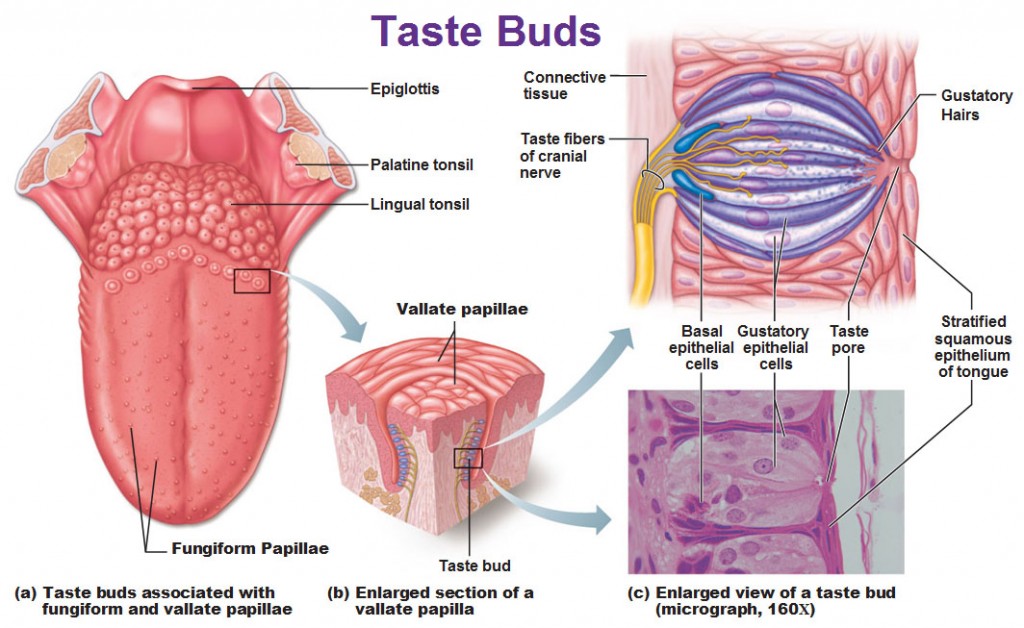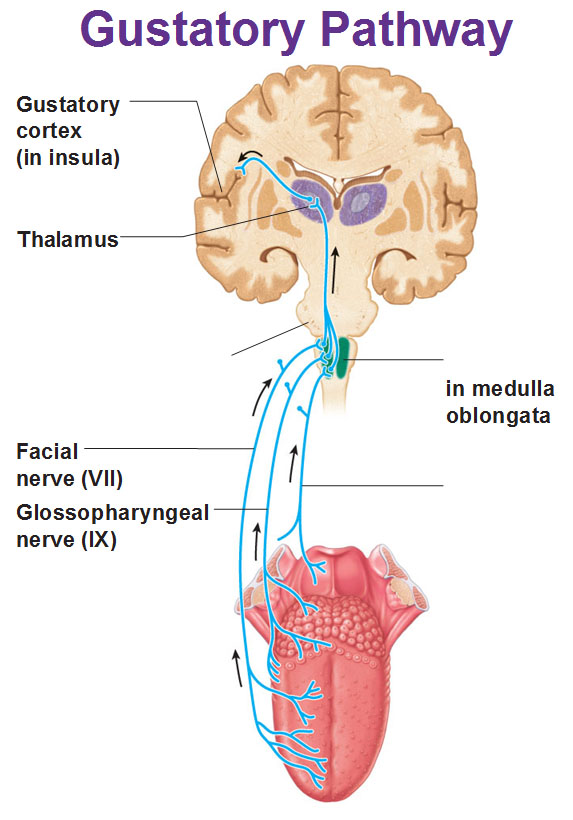Taste is also known as gustation. Smell is also known as olfaction. The receptors are classified as chemoreceptors because they respond to chemicals such as the food dissolved in saliva.
There is no structural difference among taste buds but we have four basic qualities of taste: sweet, sour, salty and bitter. The fifth basic taste is umami which means deliciousness or savoriness. Umami is a loanword from the Japanese umami (うまみ) that means “pleasant savory taste.” Umami is represented by the taste of the amino acid L-glutamate and a couple ribonucleotides.
Each taste bud contains about 50-100 epithelial cells. There’s 3 major cell types, the basal epithelial cells, gustatory epithelial cells and supporting cells. The picture below starts with the whole tongue then takes a closer look at a single vallate papilla, then zooms in and looks at a single taste bud.

Fungiform Papillae are found over the whole tongue. The buds are at the apical (top) surface.
Vallate papillae are found at the back of the tongue and the buds are alongside the walls of them.
Gustatory hairs are microvilli of gustatory epithelial cells.
When taste fibers are excited, the facial (VII) and glossopharyngeal (IX) and some by the vagus nerve (X) which innervate the tongue and epiglottis, relay this information to the sensory neurons in the solitary nucleus (not labeled) in the medulla oblongata and carry it over to the cerebral cortex.

Much about the gustatory system is still unknown as it’s extremely complex. The labeled line model suggests that different tastes have segregated pathways to the brain. The across fiber theory says that different tastes are represented by different activity across a neural population.
Use this Table of Contents to go to the next article

YOU ARE HERE AT THE SPECIAL SENSES






